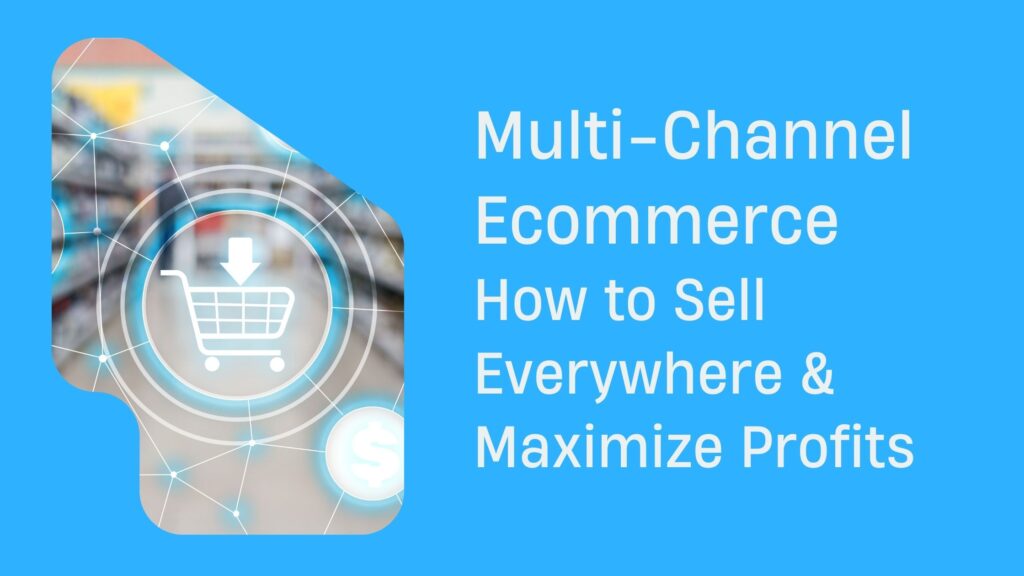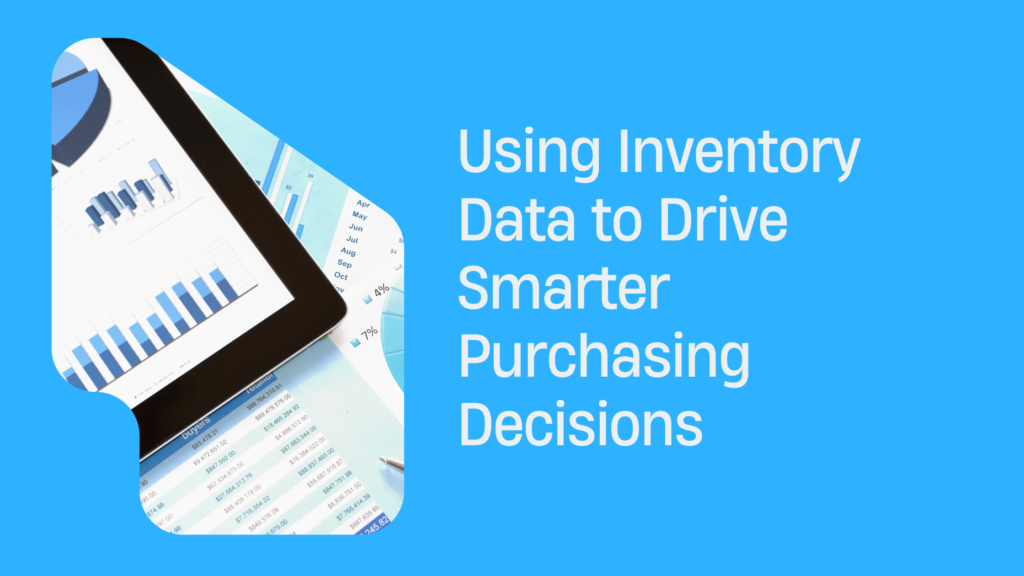Multi-Channel Ecommerce – How to Sell Everywhere & Maximize Profits
Selling on multiple platforms helps businesses reach more customers and boost revenue. Multi-channel ecommerce means selling products across different online marketplaces, social media, and your website. It reduces reliance on a single platform and increases sales opportunities.
This blog covers the basics of multi-channel ecommerce, why it matters, and how to choose the right sales channels. You’ll also learn how to manage inventory, optimize listings, and market effectively to grow your business across multiple platforms.
What is Multi-Channel Ecommerce?
Multi-channel ecommerce means selling products on multiple platforms instead of just one. It helps businesses reach more customers through marketplaces, social media, and their websites.
Diversifying sales channels boosts visibility, attracts more buyers, and reduces reliance on one revenue source. To succeed, brands need smooth inventory management, strong branding, and platform-specific content strategies.
How it Differs from Single-Channel Selling
- Single-channel selling focuses on just one platform.
- Multi-channel ecommerce connects with customers across multiple sales platforms.
- It diversifies risk, preventing loss if one channel underperforms.
- Requires better inventory management to avoid overselling.
- Increases brand exposure and potential customer reach.
Examples of Popular Sales Channels
- Marketplaces – Amazon, eBay, Walmart, Etsy.
- Social Media – Facebook Shops, Instagram Shopping, TikTok Shop, Pinterest.
- Owned Websites – Shopify, WooCommerce, Magento, BigCommerce.
Why Multi-Channel Selling Matters?
Expanding Reach to Different Customer Segments
- Customers shop on different platforms. Some prefer marketplaces like Amazon, while others buy from brand websites or social media.
- Selling on multiple channels helps reach customers wherever they are, increasing the chances of making a sale.
- Some platforms attract bargain hunters, while others cater to premium shoppers. Selling across various channels ensures a brand meets different buying preferences.
- Customers often research on one platform but buy from another. A presence on multiple platforms increases visibility throughout the buying journey.
Diversifying Income Sources to Reduce Risk
- Relying on a single sales channel is risky. If one platform changes its policies or algorithms, sales could drop overnight.
- Selling on multiple platforms keeps revenue steady, even if one channel slows down.
- Seasonal trends impact each platform differently. Selling on multiple channels keeps sales steady all year.
- If a marketplace suspends an account or has technical issues, other channels keep sales going and prevent revenue loss.
Enhancing Brand Visibility and Credibility
- A presence on multiple platforms builds brand recognition. Customers seeing a brand on various sites are more likely to trust it.
- Multi-channel selling increases exposure to new audiences who may not have discovered the brand otherwise.
- Brands with a consistent presence across platforms appear more established and professional.
- Engaging with customers on different channels through reviews, social media, and direct interactions builds loyalty and trust.
Choosing the Right Sales Channels
Picking the right platforms is key to success in multi-channel ecommerce. Each sales channel has its benefits and challenges. Here’s how they compare:
Selling on Marketplaces
Marketplaces give businesses access to a large audience. They handle much of the traffic and trust-building, which makes it easier to sell.
- Amazon – Best for high-demand products. Requires competitive pricing and strong product rankings. Fees can be high.
- eBay – Ideal for unique, used, or collectible items. Auction-style listings allow flexibility, but competition is tough.
- Walmart Marketplace – Growing in popularity. It has lower fees than Amazon but requires approval to sell.
Pros – Huge customer base, built-in trust, and fulfillment options (e.g., FBA).
Cons – High fees, strict policies, and intense competition.
Utilizing Social Commerce
Social media platforms have evolved into powerful shopping destinations. They allow direct interaction with customers and personalized marketing.
- Facebook Shops – Easy to set up and integrates with Instagram. Best for businesses with strong social engagement.
- Instagram Shopping – Works well for visual products like fashion, beauty, and home decor. Shoppable posts drive impulse buys.
- TikTok Shop – Ideal for viral products. Short videos and live selling increase engagement.
Pros – Engages customers directly, boosts brand awareness, and leverages influencer marketing.
Cons – Requires active content creation, algorithm changes affect visibility, and conversion rates vary.
Direct-to-consumer (DTC) Websites
Owning a website gives complete control over branding, pricing, and customer experience.
- Shopify – User-friendly and great for startups. Offers various plugins and integrations.
- WooCommerce – A flexible, cost-effective option for WordPress users. Requires some technical knowledge.
- Magento – Best for large businesses. Highly customizable but requires developer support.
Pros – Full control, better profit margins, and customer data ownership.
Cons – Requires marketing investment, setup costs, and ongoing maintenance.
Each channel serves a different purpose. The best approach is to mix and match based on business goals and audience preferences.
How to Optimize Listings Across Different Channels?
Optimizing product listings is key to succeeding in multi-channel ecommerce. A well-structured listing can improve visibility, attract more buyers, and increase conversions. Here’s how to enhance your listings across different platforms.
Writing High-Converting Product Descriptions
A strong product description helps customers understand the value of your product and why they should buy it. Keep it clear, engaging, and informative.
- Highlight the key benefits and unique features.
- Use bullet points for easy readability.
- Keep the tone friendly and persuasive, avoiding technical jargon.
- Include relevant keywords naturally to improve search rankings.
- Address common customer concerns to reduce hesitation.
Using High-Quality Images and Videos
Visuals play a huge role in buying decisions. Clear and attractive images can increase trust and engagement.
- Use high-resolution images with a clean background.
- Show the product from multiple angles.
- Include lifestyle images to help customers visualize real-world use.
- Add short product videos demonstrating features or functionality.
- Ensure images and videos meet the specific requirements of each platform.
Pricing Strategies for Competitive Advantage
Pricing directly affects conversions. A smart strategy helps maintain competitiveness while maximizing profits.
- Research competitor pricing on each platform.
- Use dynamic pricing tools to adjust prices based on demand.
- Offer limited-time discounts or bundle deals to increase order value.
- Consider platform fees and shipping costs when setting prices.
- Test different pricing strategies to find what works best for your audience.
Managing Customer Reviews and Ratings
Positive reviews build credibility and influence buying decisions. A strong reputation across channels boosts sales.
- Encourage customers to leave reviews through follow-up emails.
- Respond to reviews—thank satisfied customers and address concerns professionally.
- Monitor feedback to identify areas for improvement.
- Report fake or misleading reviews to maintain brand integrity.
- Use customer testimonials in marketing to build trust.
Streamlining Inventory & Order Management
Managing inventory efficiently is key to success in multi-channel ecommerce. Selling on multiple platforms requires real-time stock tracking, syncing inventory, and avoiding stockouts or overselling. A well-organized system keeps operations smooth and customers happy.
Importance of Real-Time Inventory Tracking
Keeping track of inventory in real time ensures you never sell what you don’t have. Without real-time tracking, stock discrepancies can lead to canceled orders and unhappy customers.
- Helps prevent overselling by updating stock instantly across all sales channels.
- Reduces errors caused by manual updates and miscounted stock.
- Provides clear visibility into inventory levels, helping plan restocks efficiently.
- Minimizes the risk of selling out unexpectedly, keeping customers satisfied.
Using Automation Tools to Sync Stock Levels
Automation tools simplify inventory management by syncing stock levels across all platforms. Instead of updating each store manually, automation ensures inventory is always accurate. Businesses with complex inventory needs often use custom software development services to build automation that fits their systems and meets compliance requirements
- Inventory management software connects all sales channels, updating stock instantly.
- Reduces human errors that can lead to overselling or miscounts.
- Saves time by eliminating the need for manual updates.
- Helps manage multiple warehouses or fulfillment centers with ease.
Avoiding Overselling and Stockouts
Running out of stock or overselling products can damage a brand’s reputation. Preventing these issues keeps customers happy and avoids unnecessary cancellations.
- Set low-stock alerts to restock before running out.
- Use buffer stock to avoid sudden sellouts due to high demand.
- Integrate fulfillment centers to ensure smooth order processing.
- Regularly audit inventory to catch discrepancies before they cause problems.
Marketing Strategies for Multi-Channel Ecommerce
Marketing is key to making multi-channel ecommerce successful. A solid strategy attracts customers, boosts sales, and builds brand awareness across platforms. Here’s how to market effectively across multiple channels:
Running Platform-Specific Ads
Each sales channel has its ad system, and tailoring your ads to each platform improves results.
- Google Ads – Use search ads for high-intent shoppers and display ads for brand awareness.
- Meta Ads (Facebook & Instagram) – Run targeted campaigns using audience segmentation and dynamic product ads.
- Amazon PPC – Bid on high-converting keywords to rank higher in search results and increase sales.
- TikTok & Pinterest Ads – Ideal for visual and trend-driven products, helping brands engage younger audiences.
Leveraging Email Marketing for Cross-Channel Promotion
Email marketing connects customers across multiple sales platforms.
- Send personalized recommendations based on past purchases.
- Use cart abandonment emails to bring shoppers back.
- Offer exclusive discounts or early access to new products.
- Automate follow-ups and re-engagement campaigns.
Using Retargeting to Recover Abandoned Carts
Retargeting reminds potential buyers to complete their purchases.
- Use Facebook Pixel and Google Retargeting to show relevant ads to cart abandoners.
- Offer time-sensitive discounts or free shipping to create urgency.
- Use dynamic retargeting ads to display the exact products shoppers left behind.
- Optimize landing pages to reduce friction and increase conversions.
Influencer Collaborations & Affiliate Marketing
Partnering with influencers and affiliates helps expand reach across multiple channels.
- Work with influencers to showcase products through reviews and tutorials.
- Create an affiliate program where partners earn a commission for every sale.
- Use trackable links and discount codes to measure campaign success.
- Partner with micro-influencers for higher engagement and targeted audiences.
Common Challenges & How to Overcome Them
Managing Inventory Across Multiple Platforms
Keeping track of stock levels across different sales channels can be tricky. Overselling or running out of stock can lead to unhappy customers and lost sales. To stay on top of inventory:
- Use inventory management software to sync stock in real time.
- Set low-stock alerts to avoid running out of popular products.
- Consider a centralized fulfillment system for better tracking and order management.
- Regularly audit inventory to prevent errors and discrepancies.
Dealing with Pricing Conflicts and Competition
Different platforms have different fee structures, which can make pricing tricky. Customers also compare prices across multiple sites before buying. To manage pricing effectively:
- Use dynamic pricing tools to adjust prices based on demand and competitor rates.
- Offer exclusive bundles or perks on your website to attract direct sales.
- Monitor platform rules to avoid violating pricing policies.
- Test different price points to find the best balance between profit and sales.
Handling Customer Service Efficiently
Selling on multiple platforms means dealing with different customer inquiries, return policies, and expectations. Poor customer service can lead to bad reviews and lost trust. To manage support effectively:
- Use a shared inbox or CRM system to track customer messages from all platforms.
- Set clear response times and automate common inquiries with chatbot for ecommerce
- Standardize return policies as much as possible to reduce confusion.
- Train support staff to handle multi-channel customer interactions smoothly.
Final Thoughts
Multi-channel ecommerce helps businesses reach more customers, increase sales, and reduce risk. Selling on multiple platforms creates new opportunities but requires smart planning. Test different channels and strategies to see what works best.
Optimize listings, manage inventory efficiently, and use automation to stay organized. Keep pricing competitive and marketing consistent across platforms. Focus on customer experience to build long-term loyalty. With the right approach, multi-channel ecommerce can drive steady growth and higher profits.



